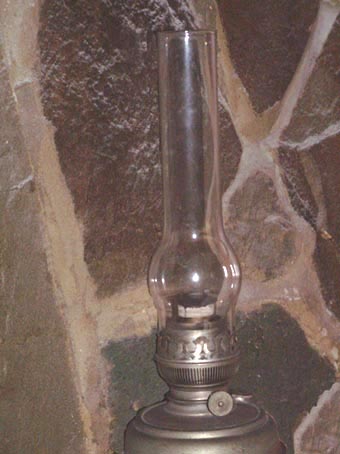|
A Patent for the design was
first lodged in 1895 by Erich & Graetz of Berlin.
Soon many burner manufacturers adapted the design to avoid
patent infringements and bought out their own type of burner
very similar to the Matador.
The 'Augusta' burner manufactured by Otto Muller in Germany is
often mistaken as a Matador because it is so similar!
The
tooling was taken over in the 1960's by Brokelman, Jager &
Busse, they
continued to manufacture right up to the 1970's when the factory
closed.
The tooling for the Matador burner was then purchased by Den
Haan of Rotterdam who continue to manufacture the burner today
as the 'Ideal' burner.
Despite the appearance of being a
round wick lamp it is in fact a flat wick which forms into a
circle as it passes through the burner. This clever design allows
a large flat wick to fit into a small burner giving a good light
compared to an ordinary flat wick burner of the same chimney
size.
Many lamp burners, including Matador type, are referred
to in 'Lines', (abbreviated to three ticks ''' as opposed to the
two ticks used to denote inches), and is a measurement of size.
What are 'Lignes'?, click here to find
out..!
Although the Matador burner uses a flat wick it is
important that the wick is exactly the right width. Too wide and
the wick will jam, too narrow and there will be a gap between the
ends of the wick when it appears as a circle at the top of the
wick tube. This will cause uneven burning, smell and blackening
of the chimney.
The design of burner is referred to as 'side
draught' because air is drawn into the burner through a
triangular 'window' in the side of the wick tube and fed up to
the inside edge of the wick. This allows the wick to burn much
brighter than if air could only reach the outside edge. The
burner can be fitted to a wide variety of founts, including
decorative glass ones, because it does not require an air tube
through the fount.
The correct chimney for this type of
burner is the 'Matador' style, the bulge in the chimney makes the
flame into the round form characteristic to this burner.
|


